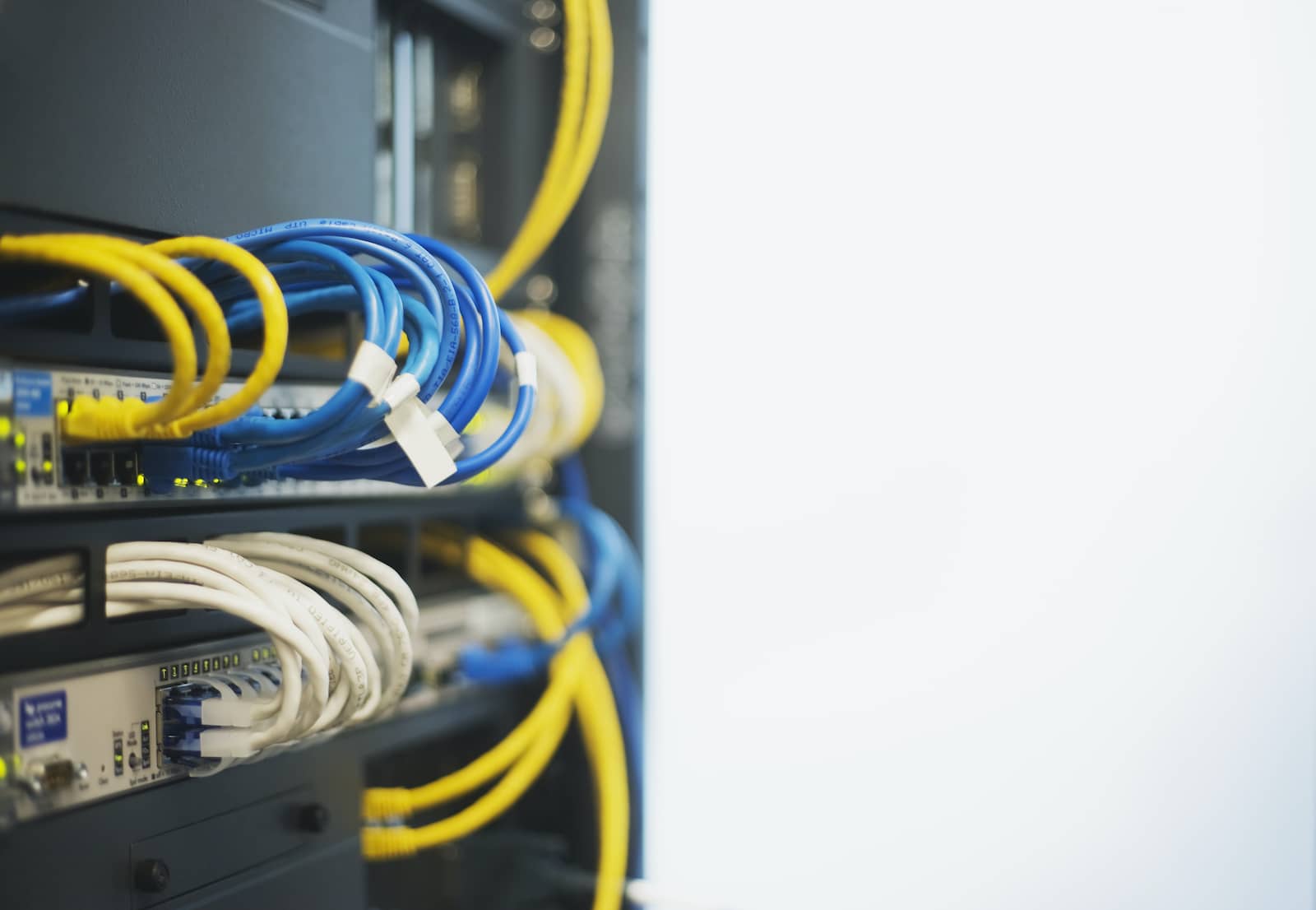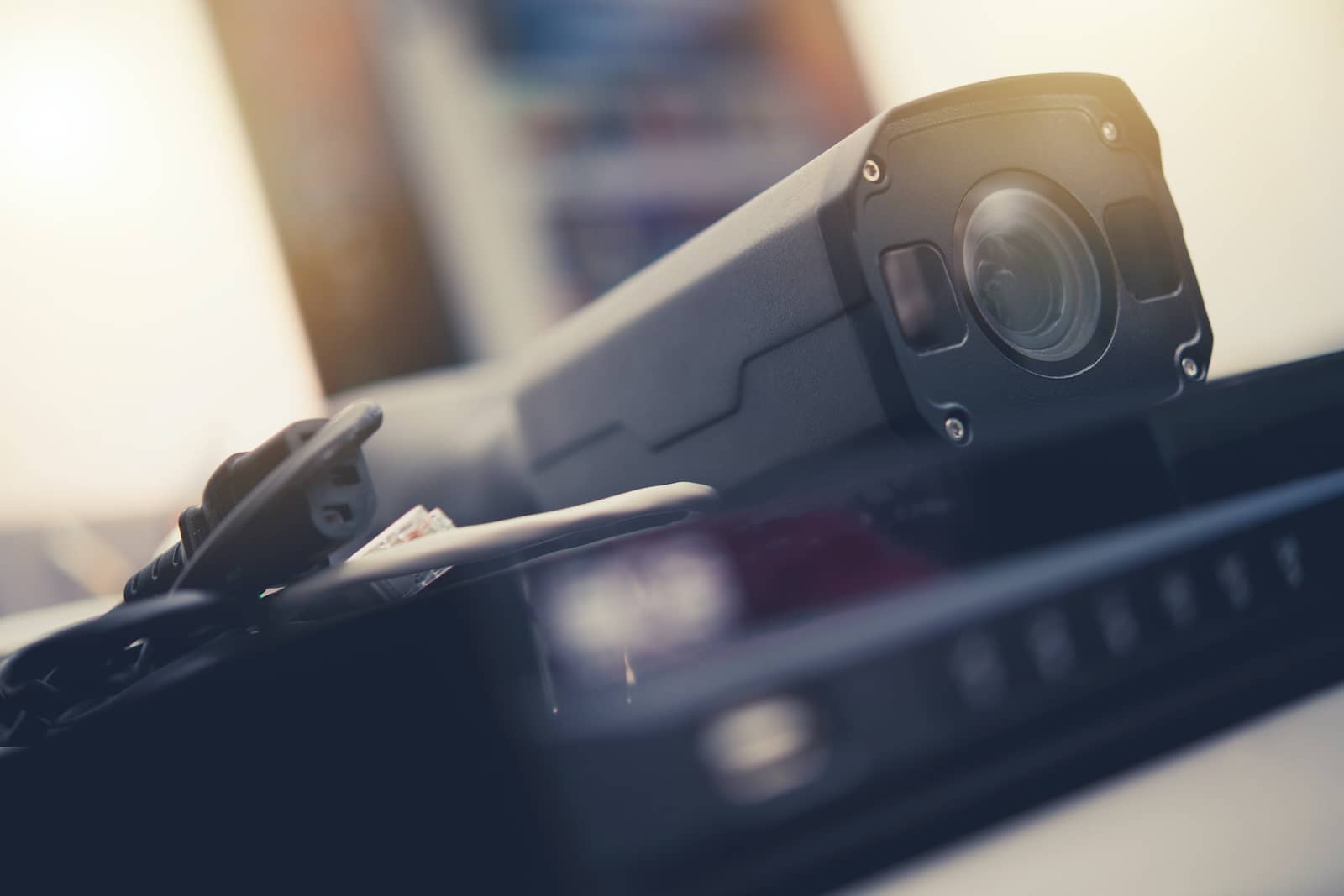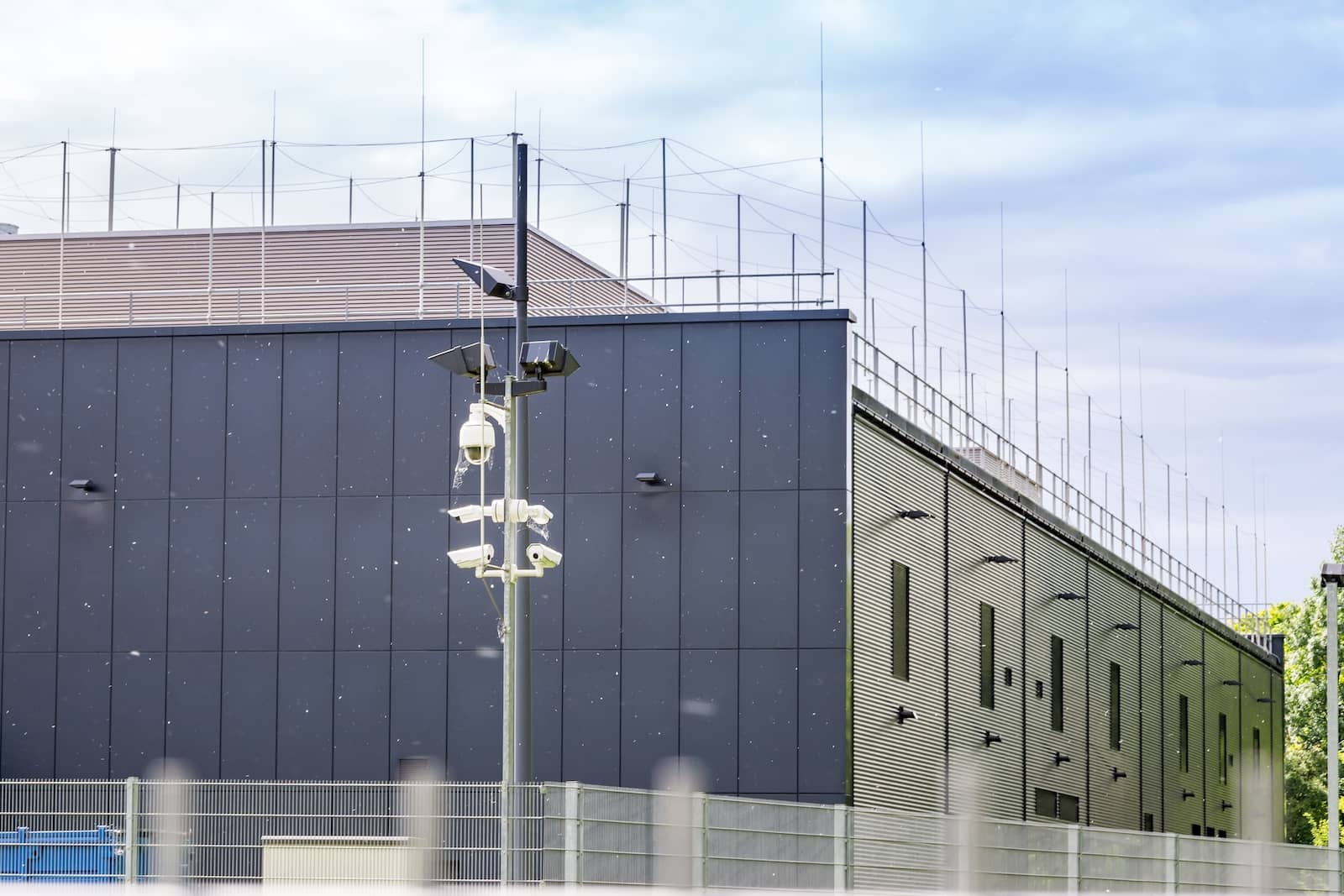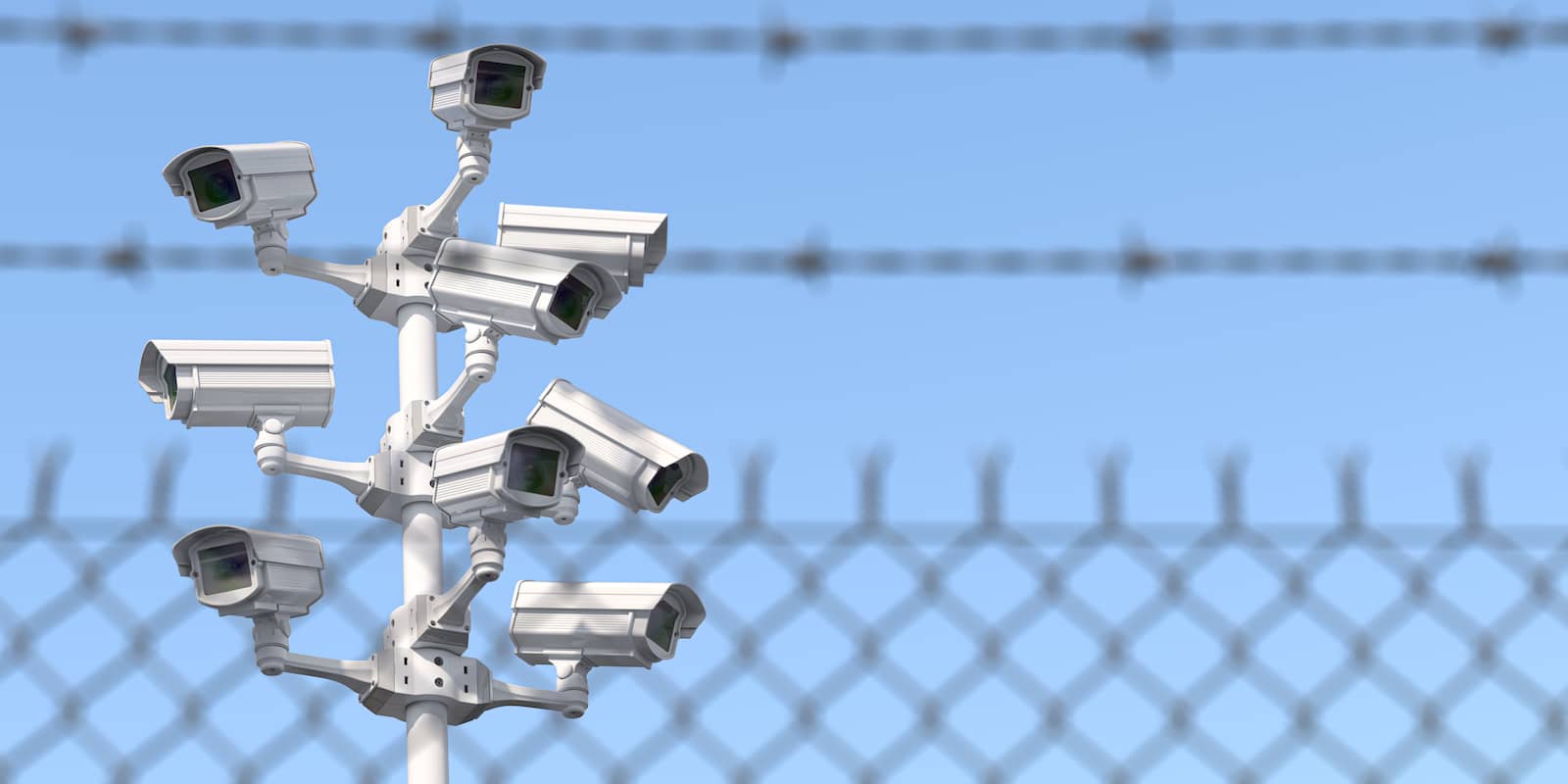The Benefits and Applications of PoE in Correctional Facilities
The popularity and use cases of Power over Ethernet (PoE) are rapidly rising in a wide range of industries, from power to telecommunications. But there is one industry rarely discussed that can especially benefit from this rising technology—correctional facilities. In fact, bringing PoE into correctional facilities may just have the potential to change how we think about digital infrastructure and the criminal justice system overall.
We’re already seeing PoE used for a wide range of applications in the prison sector. The unique benefits and flexibility of the technology make it a perfect fit, although security also has to play a major role in the consideration. Let’s discuss the nuances and potential of PoE in correctional facilities, starting with a basic overview of the technology itself.

What is PoE?
Short for “Power over Ethernet”, PoE is a technology that integrates network connectivity within the power supply of a given device. This ability to run both power and data through a single cable can be beneficial for wireless access points, IP cameras, VoIP phones, and any other devices that require both network access and power.
As its name suggests, PoE uses ethernet cabling to source both power and network connection to a given device. PoE also utilizes less expensive wiring while allowing businesses and organizations to add devices to the network without touching the electrical grid. The PoE standard was first developed in 2003 and has since evolved to power devices with variable electricity needs and much more.
PoE Terminology and Standards
Any administrator looking into implementing PoE technology will need to become familiar with a few key terms that drive the technology and network setup:
- Powered Device (PD) describes any device that is connected to the network and receives both power and connectivity through the PoE system. This could include VoIP phones, security cameras, lighting, climate controls, wireless access points, and other types of IoT (internet of things) devices.
- Power Sourcing Equipment (PSE) is any type of equipment that provides both power and data to powered devices. PSE controllers are typically either switches or injectors and are categorized as either Endspan or Midspan.
- Endspan describes power-sourcing equipment that can power and provide data to devices without needing an additional power source. The typical endspan in a PoE network is a PoE Network Switch which can effectively distribute both power and data to different types of powered devices.
- Midspan describes a device that converts non-PoE networks to PoE. The most common device in this category is a PoE Injector, which is inserted between the regular (non-powered) network switch as a power source for the PDs on the network.
In addition to these basic definitions, it’s also important to keep a few standards in mind when building PoE networks. The original standard originates from 2003 and is known as IEEE 802.3af. It can support up to 15.4 watts of DC power per port. This standard was updated to IEEE 802.3at in 2009, which is also known as PoE+ or PoE Plus. This allows up to 30 watts of power to Type 2 Devices, enough for equipment like phones and security cameras.
However, even this increased power supply was not enough for the modern needs of high-powered devices. Enter IEEE 802.3bt, a standard first released in 2018. This newer standard enables power of up to 60-100 watts at the source while also increasing energy efficiency through a lower loss of power in the cable, cutting losses by up to 50%.
Network professionals will refer to the original 2003 standard as PoE Type 1 and the 2009 update as Poe Type 2. The new 802.3bt standard can come in either Type 3 or Type 4:
- Type 3 is also known as 4-pair PoE, Poe++, or UPoE. It supports up to 60 watts of power per port and is most frequently used for video conferencing, building management, and remotely operated cameras.
- Type 4 is also known as high-power PoE and provides up to 100 watts of DC power per port. It can reliably support devices as powerful as laptops and LCD screens.
As technology continues to evolve, new standards and opportunities for PoE will undoubtedly evolve. With the four current types, we’re already at a point where the technology can drive complex networks with greater efficiency and success than traditional, disconnected power and data infrastructure.

How PoE Works
Ethernet cables are built with four pairs of wires, but standard network connections only use two of them to transmit data. PoE leverages the two extraneous pairs by using them to conduct power to the same device, sending and receiving the network data.
The above-mentioned Type 1 and 2 keep a strict separation between the pairs carrying data and the other two wires carrying power. Types 3 and 4 use all four twisted pairs of wires to send both power and data, increasing flexibility depending on the need for either at any point.
Any ethernet cables labeled Cat5 and above can carry PoE Types 3 and 4 in this fashion. Because power and network data are transported at different frequency levels, they won’t interfere with each other or endanger either their surroundings or the devices they’re designed to connect.
The Benefits of PoE
As outlined elsewhere, PoE brings with it a wide range of advantages across its various potential applications. Some of the most common benefits of PoE include:
- Lower installation costs, thanks to the ability to deliver both power and data with a single cable. PoE also eliminates the need to connect to the main power outlets, allowing for exterior applications without the need for installing electrical infrastructure around them. Finally, PoE’s reliance on ethernet cables means qualified electricians are not always needed for installations.
- Decreased electrical hazards, with power from a single cable reducing the need for adapters or sockets. Fewer installation steps and devices or connections increase the safety of the operation while also reducing the risk of equipment damage, electrical overload, and power outages.
- Improved flexibility, with the ability to plug and play devices without worrying about the larger electrical grid within the organization. Adding and subtracting devices becomes easier because these would not have to be fixed to an electrical outlet, creating more opportunities for using ad hoc devices to fill a need rather than having to abide by electrical limitations.
- Increased scalability, due to less reliance on additional electrical outlets. Because installing new devices and bringing in new network connections is so simple when using PoE, organizations are able to add devices quickly to increase the scale and scope of the network as needed.
- Enhanced data intelligence, thanks largely to the ability to connect IoT devices that would otherwise require legacy power connections. Smart security cameras, facility management devices like HVAC controllers and other devices can all feed data into analytics software to determine ideal power use.
Combine it all, and you get a system that is not only more flexible but also offers the opportunity for significant cost savings. A study by Phillips found that PoE-connected lighting resulted in up to 80% energy savings compared to traditional LED lighting. Meanwhile, PoE security cameras can result in cost savings of more than 30% compared to non-PoE alternatives.

Potential Applications of PoE
Across industries, PoE is most commonly applied in three areas: Voice over IUP (VoIP) phones, internet protocol (IP) cameras, and wireless access points.
VoIP phones operate via an IP network, connecting them directly with the local network and enabling users to answer calls, access their voicemail, or power off their phones remotely. IP cameras send their video footage via the local network, eliminating the need for a recording device and increasing the speed of deployment and repositioning. Wireless access points can turn an ethernet signal into WiFi access in nearly any location.
It’s important to note that these are not the only potential applications of PoE in correctional facilities or elsewhere. This technology can also power building and organization-wide lighting and HVAC systems. It can also extend to IP intercoms, IP clocks, and security card readers.
As IoT networks continue to expand in business uses, PoE will only continue to gain popularity. As it continues to gain traction, the applications for this technology will only continue to expand, offering increasing benefits for businesses across industries.

PoE and Security Cameras
As one of the most common applications of PoE in correctional facilities, security cameras deserve a closer look. All of the general benefits mentioned above apply here, from increased flexibility to enhanced data intelligence. A few nuances are especially worth pointing out on the topic of PoE-enhanced security cameras:
- Increased placement options. Thanks to the simplicity of installation, correctional facilities are able to reduce and eliminate blindspots in their surveillance. They can also be moved easily, increasing coverage areas based on the current need.
- Lower installation costs. Security is a top concern in and around prisons, but budget considerations still play into the equation. Prisons are being hit hard by budget cuts. The lowered installation costs of PoE cameras mean security never has to be deprioritized despite financial limitations.
- Simpler maintenance and management. Reducing the cabling and devices needed to power security cameras means lower maintenance costs and effort. That, in turn, decreases the potential for camera failures when they are needed most, improving the reliability of the security system for anyone with the appropriate access.
- Increased reliability. Being able to rely on a single power source independent of the electrical grid reduces the necessity to rely on various outlets and other electrical devices that could fail. Correctional facilities can even connect an uninterruptible power source (UPS) to their PoE network that keeps the security cameras on in case of a power outage.
- Increased safety. Connecting security cameras via PoE increases safety in two ways. Compared to legacy cameras, it prevents the ability to shut down the security network by switching off the power supply. Compared to security cameras that rely on WiFi, the hardwired network connection in PoE devices reduces the ability for intentional or accidental data breaches.
That last piece deserves a further breakdown. After all, perhaps the most important benefit of PoE in correctional facilities is its ability to modernize equipment while at the same time increasing the security of the facility in every aspect.
PoE and Correctional Facility Security
Security systems within correctional facilities have become increasingly integrated and digitized. Intercoms and security card readers have become part of IoT networks due to their ability to program access based on different sectors within a building. Access swipe data, in turn, can be used to determine and reconcile correct or inappropriate access as needed.
That data collection extends to the facility surveillance system, as well. PTZ cameras have become an integral part of maintaining the facility’s security, enabling central control over the entire complex from multiple remote locations without any blind spots or safety holes.
But that increased connectivity can come with a downside, as well. Connected devices can become vulnerable to hacking, putting the facility at risk from malicious actors and other types of security threats.
This is where PoE technology enters the equation. In many ways, it combines the best of both worlds: the increased connectivity brought about by the IoT wave and the continued security of hardwired networks that are difficult to corrupt from the outside.
At the same time, the security benefits of PoE extend beyond its protection from the outside. Because any network devices are powered directly via ethernet connection, it can act as an isolated system that is independent of the larger power supply. Now, incidental or intentional power outages can no longer affect the usability of devices like card readers and security cameras.
Most importantly, of course, PoE creates an easy and cost-efficient way for correctional facilities to build extensive, scalable, and reliable security systems. The ability to create a camera network without the need to be connected to a power grid and without bandwidth limitations can be invaluable when looking to prevent blind spots in large-sized facilities.
In other words, a comprehensive plan to implement PoE in correctional facilities can significantly improve all aspects of security.

Improving Correctional Facility Security Through Versa Technology’s PoE Technology
As the US-based distributor of PoE technology, Versa Technology, Inc. is well-equipped to help correctional facilities find the right devices and equipment to build a reliable security network. In addition to offering a wide variety of products, our US-based technical support helps us provide reliable help via email and phone, allowing for successful implementation.
Working with Versa Technology means not just getting the right support but finding the right products as well. PoE switches, injectors, and network extenders follow the latest standards to build a reliable network for correctional facilities and other applications. Shop our products to find everything you need to implement your own PoE system.

- The Benefits and Applications of PoE in Correctional Facilities
- What is PoE?
- PoE Terminology and Standards
- How PoE Works
- The Benefits of PoE
- Potential Applications of PoE
- PoE and Security Cameras
- PoE and Correctional Facility Security
- Improving Correctional Facility Security Through Versa Technology’s PoE Technology
